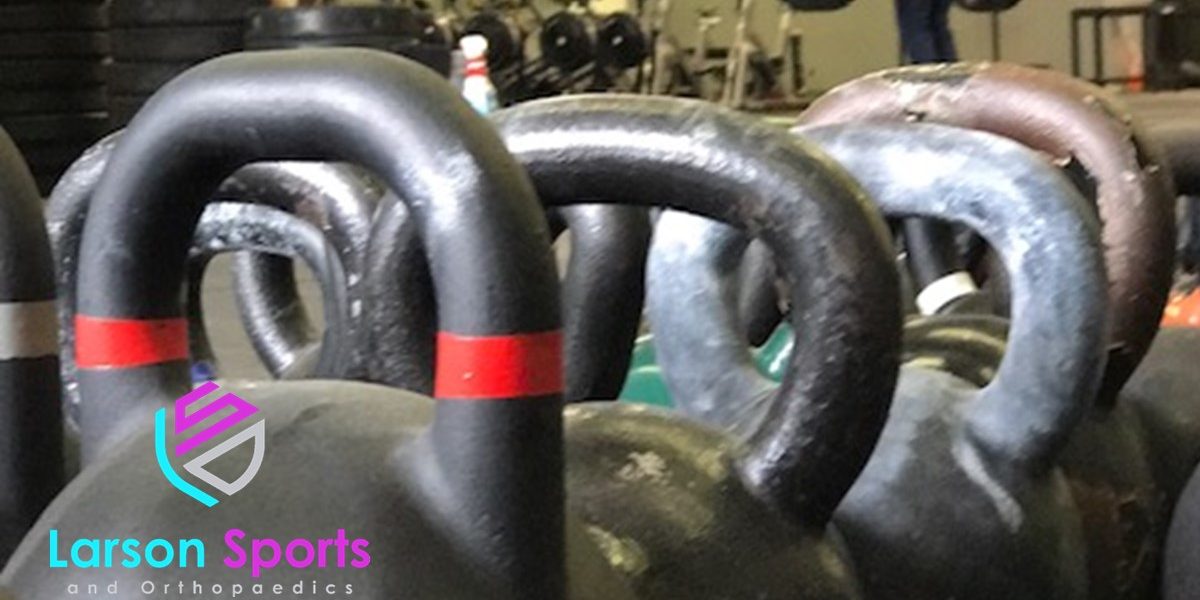We’ve talked about the importance of core strength for athletes a lot these past few weeks. And for good reason. A strong core improves athletic performance and prevents injuries. Those with nearly non-existent core strength are pretty easy to spot. Athletes who cannot maintain a neutral spine in a dead-bug position or cannot achieve a hollow hold are a dead giveaway.
However, a strong core in isolated exercises doesn’t mean much if you aren’t able to brace when performing more compound movements such as barbell or gymnastics exercises. Athletes who have good body awareness, relative strength, and flexibility can accommodate to a lack of functional core strength. But they limit their potential and are sometimes just one rep away from major injury. It’s important, as a coach, to recognize more subtle signs of core weakness and address them.
We’ve talked about a few of the subtle signs of a weak core in our Four for the Core article, but what do these weaknesses look like in real exercises?
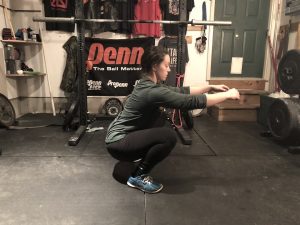
The Squat
Pictured above: Nearly textbook air squat. Weight in heels. Squat depth is below parallel, and spine is neutral and kept vertical.
Athletes with a weak core might maintain these movement standards in an air squat or back squat but can’t say the same for their overhead squat.
Here’s a common mechanics flaw you might see in these athletes:
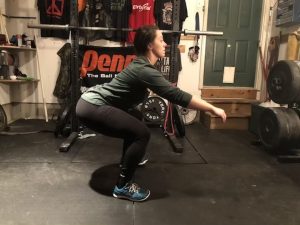
If an athlete has full range of motion at the hip, knee, and ankle but cannot squat below parallel, core weakness is a likely culprit. In the effort to keep their weight from coming onto their toes, the athlete over arches their back and shoves their hips all the way back to counter balance. Notice, their body weight is completely over their heels. Their toes are actually coming off the ground. The athlete must keep the torso almost horizontal to maintain balance. Heavier weights will bury athletes that squat with this form. It’s sure to limit their maximum power output during a high bar back squat.
Here’s a more subtle example:
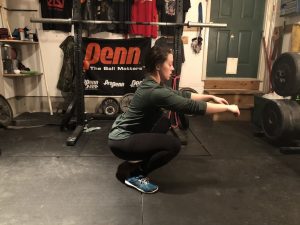
Heel is on the floor, back nice and neutral, depth is below parallel. There are just a few minor differences between this picture and the first one. The athlete’s balance and flexibility allow the knees to come far beyond the toes. Though the heel is on the floor, their weight is resting completely in the ball of the foot. When you add a barbell, you can see the barbell is now in-line with the toes, instead of mid-foot or in the heel. This shift may be only an inch or two, but can mean this difference between making or missing your lift.

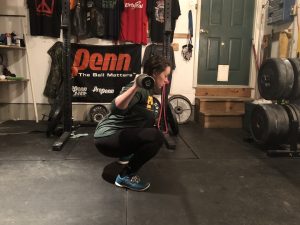
For both athletes, box squats can be utilized to retrain these movement patterns. Visual cues such as filming, as well as tactile cues such as prisoner squats or goblet squats can force the athlete to brace their core during the entire lift.
Pulling
We all know the dangers of lifting with a rounded spine. It’s been hammered at our coaching certifications. Athletes are very aware that lifting with a rounded lumbar spine leads to a lot of pain the next day. Unfortunately, many athletes have overcorrected to lift with a hyperextended back. The athlete may feel “strong” and “tight” in this position, but they’ve actually lost the benefits of a braced core and rely solely on the ligaments and muscles that attach to their spine. The athlete is now at risk for a host of problems ranging from low back pain and frequent muscles strains or pulls, to more significant problems such as lumbar disc herniation or pelvic floor dysfunction.
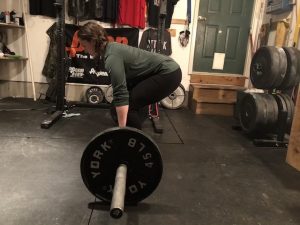
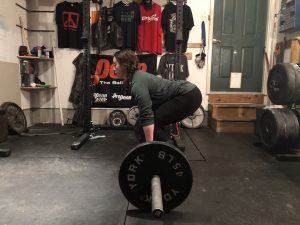
Hyperextension is one of the most common lifting flaws. And coaches don’t spend enough time correcting it. Here’s what the two positions look like at the top of the knee:
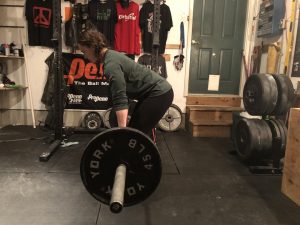
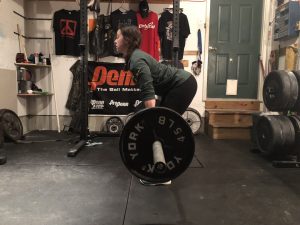
Be honest. How many of you would use a cue to get the athlete on the right to look like the one on the left? Part of the problem is athletes are often never taught a difference between a clean and a deadlift set up. We often lift with slight extension or “chest up” during olympic lifts to help maintain proper bar path. However, the risk of injury increases with load. Deadlift percentages need to be much higher than clean percentages. If they’re not, you need to be spending more time programming global strength.
Corrections for this fault can be challenging. Dead bugs are an excellent exercise which provide a tactile cue when the athlete hyperextends their back. Bird dogs are a great bridge between dead bugs and deadlifts. The athlete can then return to lighter deadlifts while reinforcing this new technique. Visual cues such as filming are some of your greatest assets to correcting this fault. Videos are a great to show the athlete immediate improvement or lack thereof.
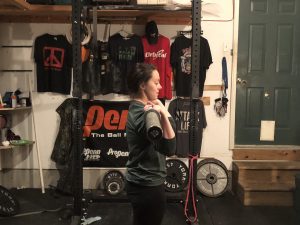
Pressing or Front Rack
The front rack fault is similar to the deadlift. The athlete above has a neutral spine and supports the barbell by bracing their core, keeping their glutes engaged, and creating a shelf with their deltoid and collarbone. The athlete below compensates for being unable to properly brace: The ribcage is thrust forward, and hips are shifted back. This posture disengages the gluteal muscles and completely cuts their core out of the lift.
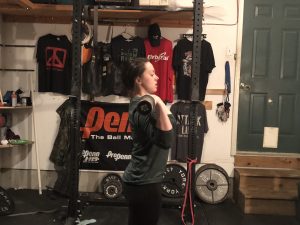
This fault can be a sign the athlete lacks mobility through their thoracic spine and/or lats. The athlete is unable to achieve a front rack position unless they compromise their spinal position. It’s important to rule this out before you assume it’s simply a lack of body coordination.
Each of these major core stability faults during the “big three” lifts boil down to the same visual signs. Look for a hyperextended lumbar spine and inability to achieve full motion in a lift despite having full range of motion at the individual joints. Use as many visual and tactile cues as necessary to help your athletes make corrections. Minor adjustments can mean huge improvements in max lifts and fewer injuries. I hope these references help you catch subtle signs of a weak core the next time your class is lifting!

